Long before smartphones and streaming services, we found satisfaction in the simplest of actions. The 1970s were filled with tactile pleasures that have largely disappeared from our digital world. These small interactions—clicking, cranking, sliding, and flipping—provided oddly satisfying physical feedback that today’s touch screens and voice commands just can’t replicate. Join us for a nostalgic trip back to when the most satisfying part of your day might have been the perfect ca-chunk of a well-executed mechanical action.
1. Cranking the Car Window Down with Perfect Timing
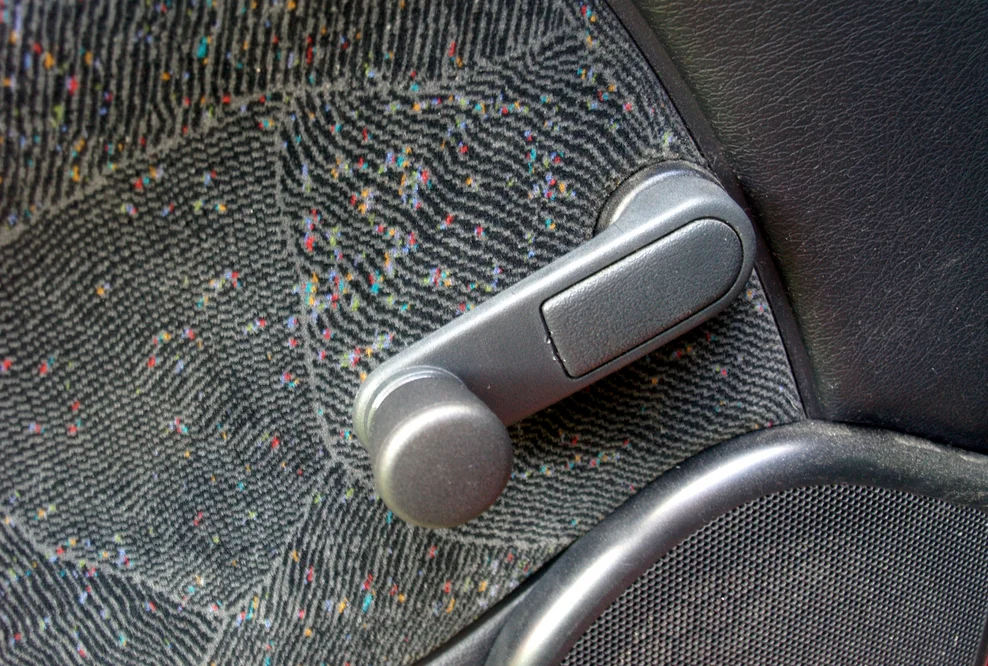
There was an art to cranking down the car window at exactly the right speed—not so fast that you’d scrape your knuckles on the door panel, but with enough momentum that you didn’t look like you were struggling. The resistance of the handle against your palm, followed by the rush of wind as the window descended, created a perfectly choreographed experience. On hot summer days, arriving at your destination with a forearm slightly more tanned than the other was the badge of honor for designated window-crankers. RAC has assembled several other obsolete features that used to be mainstream in our vehicles.
The true masters could gauge exactly how many rotations were needed for the perfect amount of air, or to speak with a toll booth attendant, without even looking at the window’s position. Parents possessed the superhuman ability to reach back and crank the rear windows while driving, and nothing felt more grown-up than being trusted to handle the window duty yourself. The subtle mechanical satisfaction of that last half-turn when the window was fully down—the handle suddenly going slack in your grip—was a small but genuine pleasure we didn’t know would one day disappear.
2. Flipping Through the Stations on the Radio Dial
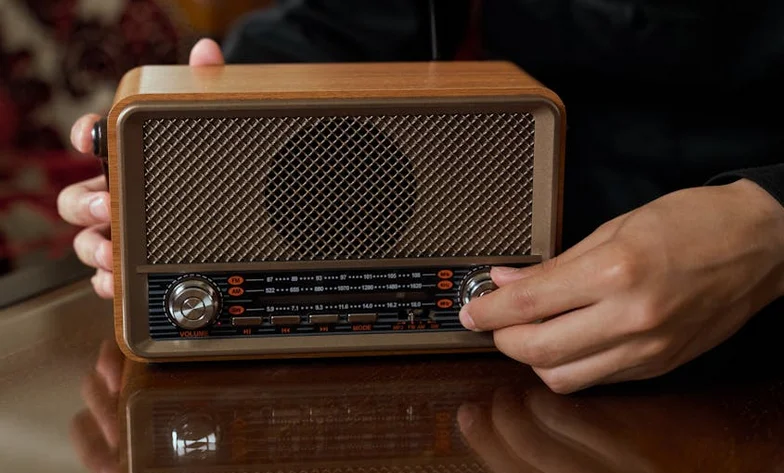
Before digital tuners and preset buttons, finding your favorite radio station required physical interaction with an actual dial. The tactile pleasure of sliding the red line across the illuminated panel, feeling the subtle resistance as you fine-tuned the reception, created a connection to the technology that touchscreens can’t replicate. The static-music-static-music pattern as you traveled across the bandwidth was like a treasure hunt for your ears. PBS turns the radio back to explore the impactful history of radio.
The skill came in knowing exactly how far to turn the dial and how lightly to touch it to find KISS or WLS coming in clear as a bell. Your fingers developed muscle memory for where your favorite stations lived on the dial, and there was genuine pride in being the person who could nail the perfect tuning while the car was in motion over bumpy roads. The combination of visual feedback (the moving indicator), tactile sensation (the resistance of the dial), and auditory result (clear signal emerging from static) engaged multiple senses in a way that pressing a digital preset button simply cannot match.
3. Flicking the Dashboard Cigarette Lighter
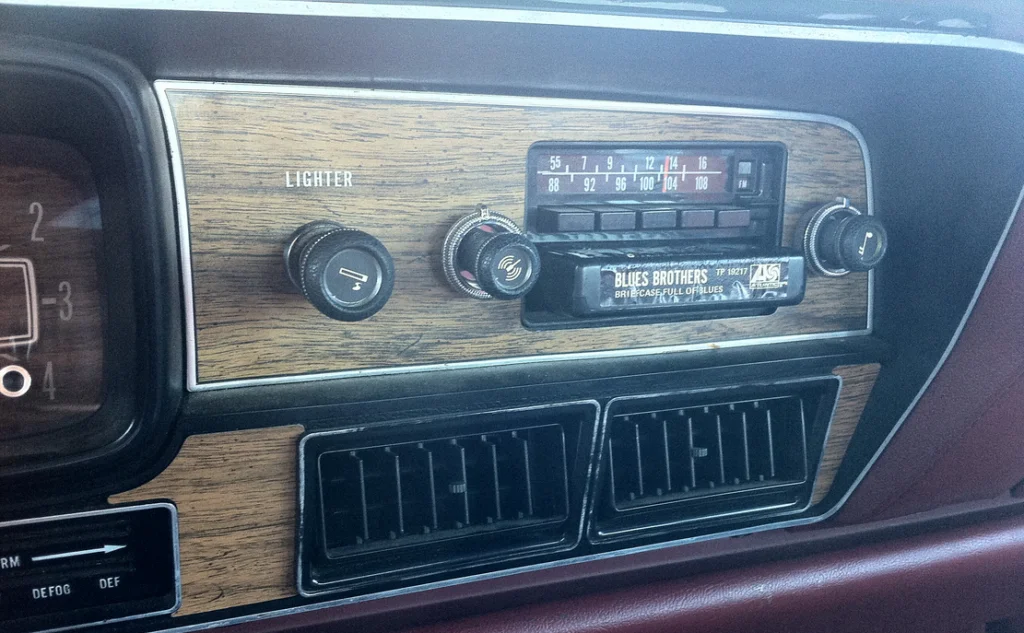
Even for non-smokers, there was something irresistible about pushing in the car’s cigarette lighter and waiting for that satisfying pop when it was ready. The anticipation as you waited those 30-45 seconds, followed by the mechanical spring action, was a tiny drama playing out in the dashboard. The orange glow visible through the coil pattern signaled it was almost time, adding visual excitement to the experience. RS Components goes over how these features disappeared and where they lingered.
Brave (or foolish) kids would test their timing by seeing how soon they could pull it out after the pop, admiring the perfect circle of hot orange coils before they faded to gray. Parents would inevitably warn “Don’t touch that!” even as they themselves found satisfaction in the perfectly executed push-wait-pop sequence. The lighter represented a rare intersection of danger, utility, and mechanical perfection that modern USB charging ports simply cannot match.
4. Adjusting the Bunny Ears on the TV
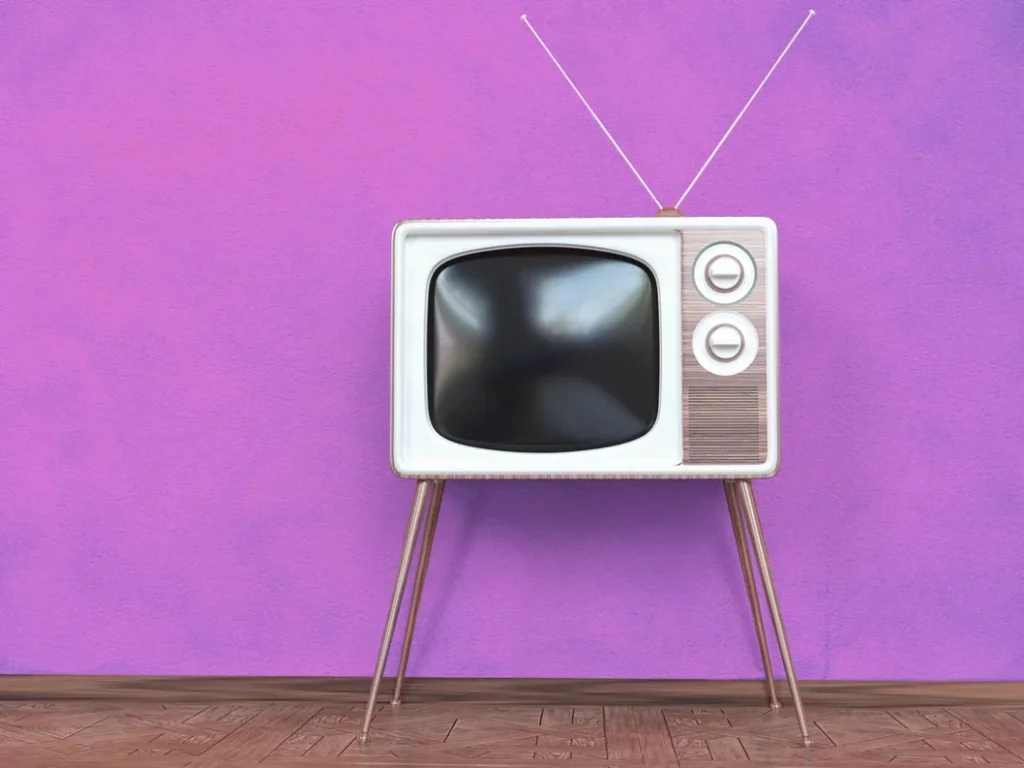
Television reception was an interactive sport in the ’70s, often requiring the coordination of multiple family members to achieve the perfect picture. The ritual began with someone standing by the TV, hands on the rabbit ear antennas, while another person directed from the viewing position: “A little to the left… no, now up a bit… hold it right there!” Finding that sweet spot where the snowy interference cleared felt like cracking a safe combination.
The true masters developed elaborate antenna configurations—aluminum foil extensions, precise angle measurements, and sometimes the human touch (literally standing in a specific spot while touching the antenna) to bring in “The Brady Bunch” or “Happy Days” with crystal clarity. The temporary nature of these solutions made them all the more satisfying; you knew that your exact arrangement of the bunny ears had created this moment of perfect reception, a small miracle of physics you had personally engineered from your living room.
5. Slamming Down the Phone Receiver

In an era before “end call” buttons, hanging up the phone was a full-body experience that provided genuine emotional release. The heavy handset of a rotary phone, slammed down into its cradle after a heated conversation, delivered a satisfying bang that perfectly punctuated your frustration. Nothing in our digital world offers the same combination of auditory feedback and physical action to express your feelings.
The weight of the receiver, the resistance of the cradle’s spring mechanism, and the definitive sound of plastic meeting plastic created a multi-sensory experience that modern phones can’t replicate. For dramatic effect, nothing beat the public payphone hang-up, where the metal-reinforced handset could produce an ear-ringing conclusion to your conversation. Even in less emotional moments, the simple action of placing the receiver gently into its cradle provided a definitive end to a call—no awkward “are you still there?” moments that plague today’s calls.
6. Dropping a Record Onto the Turntable

The ritual of playing a vinyl record engaged all the senses in a way streaming music never could. After carefully sliding the record from its sleeve, you’d hold it by its edges, feeling its substantial weight in your hands. Placing it onto the spindle, you’d watch the light catch the grooves differently as the record settled onto the platter, each album having its own unique pattern of reflections.
The moment of truth came when you lifted the tone arm, feeling its perfect balance in your fingers, and guided it to the record’s edge. The brief moment of resistance as the stylus settled into the lead groove, followed by that initial crackle before the music began, created an anticipation that made the first notes all the more rewarding. The physical connection to the music—knowing that your careful handling directly affected the sound quality—made listening an active rather than passive experience.
7. Turning the Knob on a View-Master
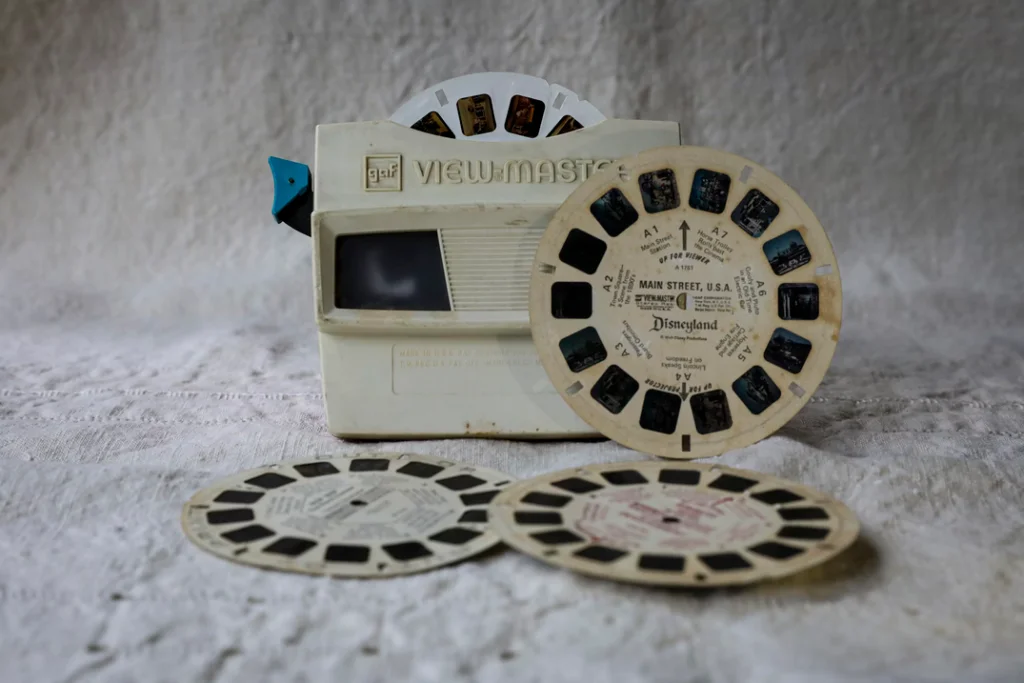
The View-Master might seem primitive compared to today’s virtual reality, but the satisfying click-clack of advancing to the next 3D image created a rhythm of discovery that digital swiping can’t match. The resistance of the lever followed by the decisive click as a new image snapped into place provided perfect mechanical feedback, while the visual reward of a new scene appearing in vivid color made for a complete sensory experience.
Holding the viewer up to your face created a private theater experience, shutting out the world as you immersed yourself in scenes from national parks, cartoon characters, or TV shows. The feeling of your finger finding the lever without looking, the perfect amount of pressure needed to advance the reel, and the mechanical sound that accompanied each new view combined to create a perfectly choreographed interaction between human and machine. The physical connection to the advancing images made you an active participant in the storytelling rather than a passive viewer.
8. Popping the Tab on a Soda Can

Before pull tabs became attached to cans, opening a soda was a small engineering challenge with a big sensory payoff. The distinctive sound of breaking the aluminum seal was followed by the visual satisfaction of removing the entire tab—a small trophy of your refreshment quest. The dual sensations of the initial resistance followed by the sudden give as the tab broke free created a perfect tension-and-release experience.
The removed tabs became impromptu toys (or unfortunately, litter) with children making chains, bracelets, or seeing how far they could flick them. The danger element—those tabs were sharp!—added a slight edge of risk to the otherwise innocent act of opening a beverage. The tactile memory of working your finger under the small ring, applying just enough pressure, and feeling the satisfying pop as the seal broke remains vivid decades later, making today’s stay-on tabs feel like a pale imitation of the original experience.
9. Sliding the Channel Selector on the TV

Before remote controls became standard, changing channels required physically interacting with the television set. The chunky channel selector knob offered substantial resistance as you clicked from one station to the next, each position providing a satisfying mechanical ka-chunk that confirmed your action. The physical feedback was so pronounced that you could often identify which channel you were on by sound alone, even without looking at the dial.
UHF channels added another dimension to the experience, with their separate dial that required fine-tuning to bring in those elusive independent stations. The smooth rotation of the UHF dial, combined with the visual feedback of watching snow gradually transform into a recognizable picture, created a game-like challenge that engaged your senses. The physical connection to the technology meant that changing channels was a deliberate act, not the mindless surfing that remote controls would later enable.
10. Pressing Buttons on a Push-Button Phone

The transition from rotary to push-button phones in the 1970s brought a new kind of tactile satisfaction. Each button press produced both an audible tone and a physical response—that perfect amount of resistance followed by the button slightly sinking into the body of the phone. The musical quality of the tones created a unique audio signature for each number you dialed, and frequent callers could recognize familiar sequences by sound alone.
The physical layout of the buttons invited exploration of patterns and rhythms that became second nature; many people could dial familiar numbers while looking elsewhere, guided only by the tactile feedback from their fingertips. Unlike today’s flat touchscreens, these dimensional buttons confirmed each action with multiple sensory cues—the feel of the button giving way, the sound of the tone, and often a subtle click from the physical switch beneath the surface. These phones transformed a simple call into a keyboard concerto for your fingers.
11. Pulling the Plunger on a Pinball Machine

In the golden age of arcades, few experiences matched the mechanical satisfaction of operating a pinball machine. The spring-loaded plunger offered perfect resistance as you pulled it back, holding potential energy like a drawn bow. The smooth metal shaft sliding through its housing provided just enough friction to create a feeling of power and control in your fingertips. The further back you pulled, the more tension you felt—a direct physical connection between your action and the upcoming launch.
Releasing the plunger produced multiple sensory rewards: the distinctive thwack sound, the vibration traveling up your arm as the spring released, and the visual payoff of watching the ball rocket up the shooter lane. The whole sequence created a perfect mini-drama of anticipation and release that players would repeat dozens of times per game. Unlike today’s digital gaming, pinball offered real physics you could feel through your hands—the weight of the ball, the resistance of the plunger, and the satisfying thump of flippers making contact were all tangible connections to the game.
12. Winding a Watch
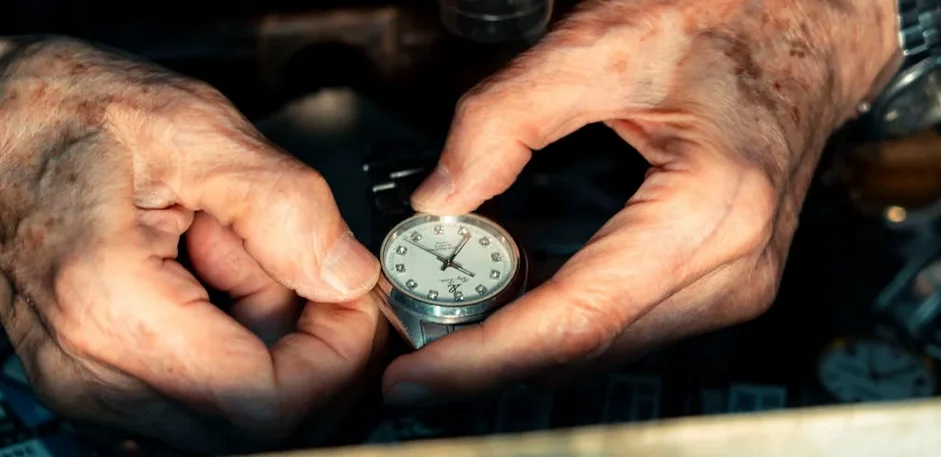
In an era before quartz and digital timepieces dominated, the daily ritual of winding a mechanical watch connected you physically to the passage of time. The small ridged crown offered just enough resistance against your fingertips as you turned it, the internal mechanism growing gradually tighter until you sensed it was sufficiently wound. The barely perceptible clicks as you turned the crown provided auditory feedback that the watch was receiving its daily dose of energy.
The responsibility of maintaining your timepiece created a relationship with the object that transcended mere utility. You could feel the tension building as you wound, developing an intuitive sense of when to stop before causing damage. For many, especially young people with their first “grown-up” watch, this ritual marked a transition to responsibility—your actions directly maintained this precision instrument. The physical connection to timekeeping has been lost in our era of automatically updating digital displays.
13. Snapping a Polaroid Picture and Watching it Develop
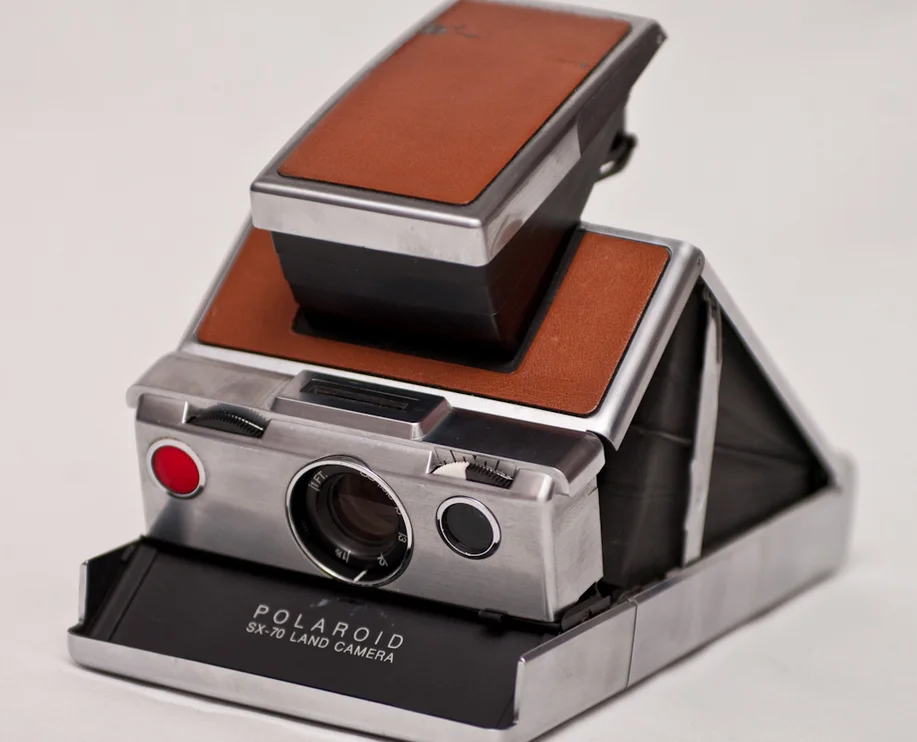
Before digital cameras provided instant gratification, Polaroid cameras offered their own form of photographic magic. The mechanical process began with the satisfying resistance of pressing the red shutter button, followed immediately by the distinctive whirring sound as the camera ejected the blank white square. The camera’s internal chemicals were activated with each shot, creating a mini chemical laboratory in the palm of your hand.
The real satisfaction came in watching the image gradually appear—first as vague shadows, then recognizable shapes, and finally as a fully formed photograph with its distinctive white border. This transformative process, taking place before your eyes over the course of minutes, created a sense of wonder that digital photography can’t replicate. The physical photograph, developing in real-time as you waved it in the air (despite the company’s warnings not to), connected you to the photographic process in a way that viewing images on a screen never could.
These tactile pleasures of the 1970s remind us that satisfaction often comes from the physical connection between action and result—the perfect resistance of a mechanical device, the audible confirmation of a successful operation, and the visual payoff of seeing your action create an immediate change in the world. In our digital age, where most interactions have been reduced to identical taps on glass screens, we’ve lost the rich sensory feedback that once made everyday actions so satisfying. Perhaps that’s why many of us still feel a nostalgic pull toward analog technologies and mechanical devices—they engaged our senses in ways that made us active participants rather than passive users.


